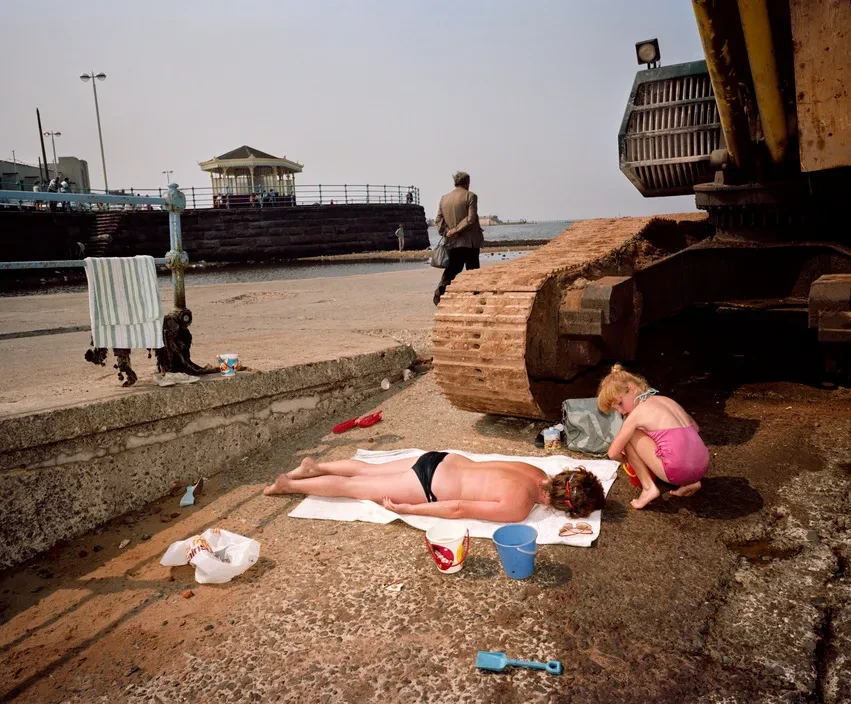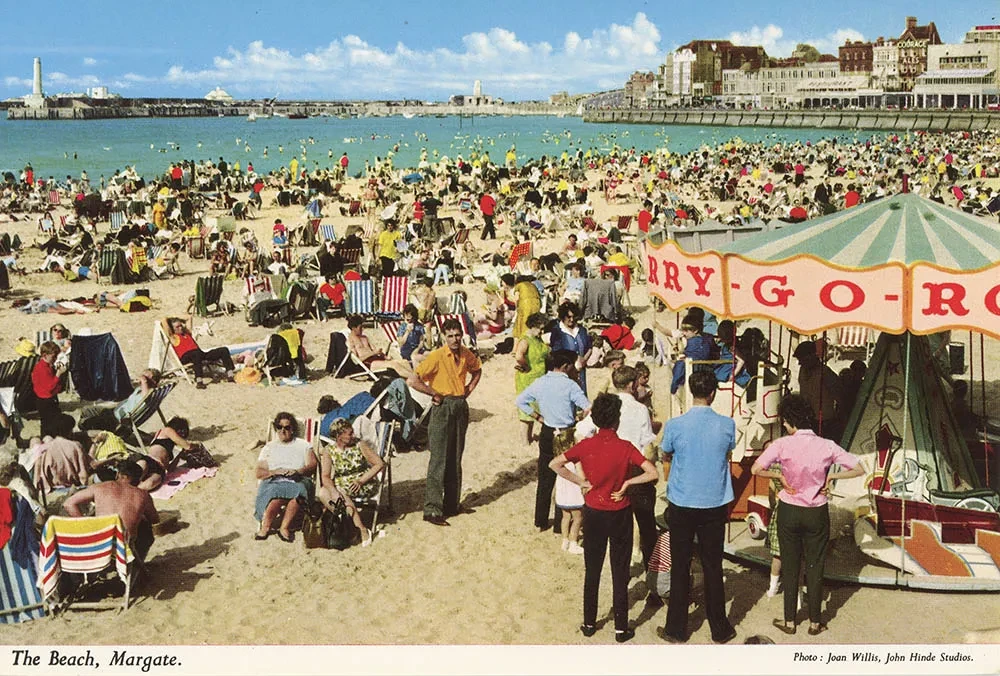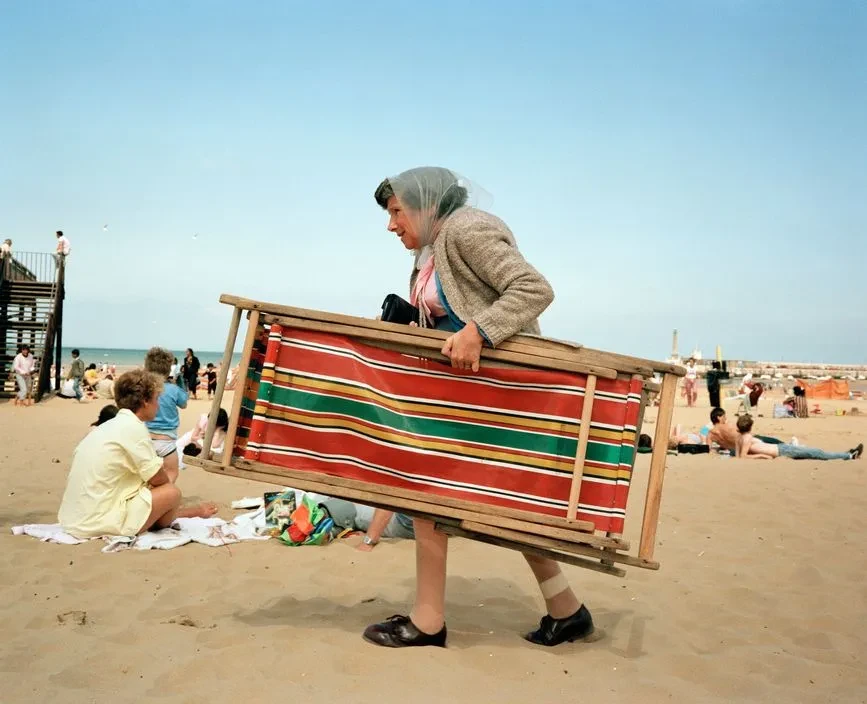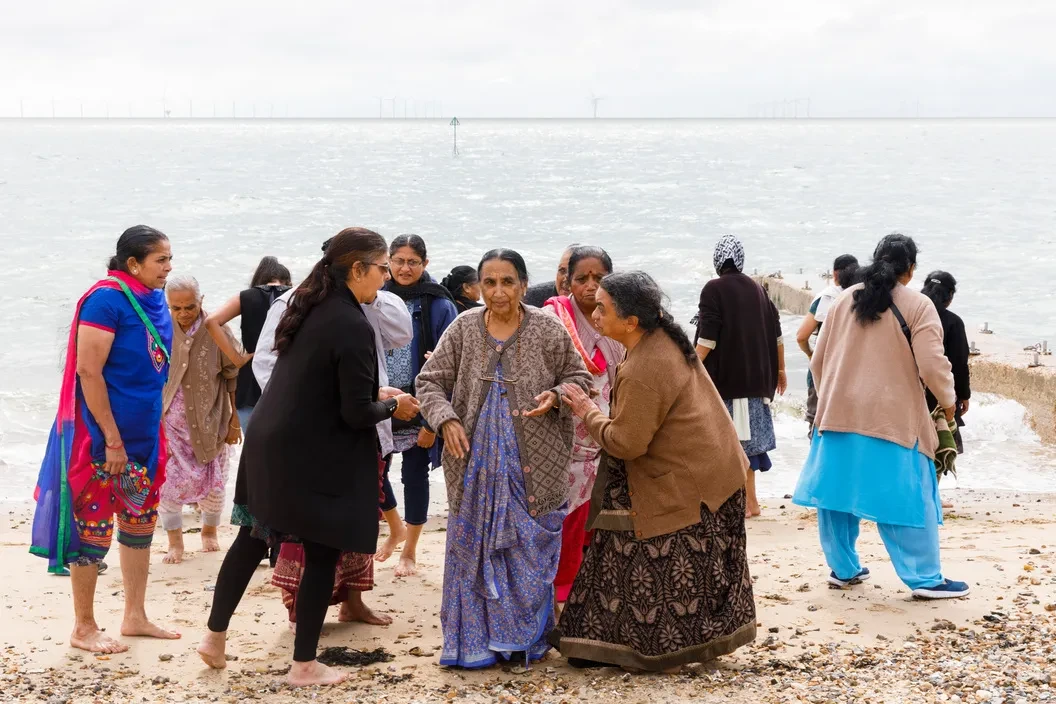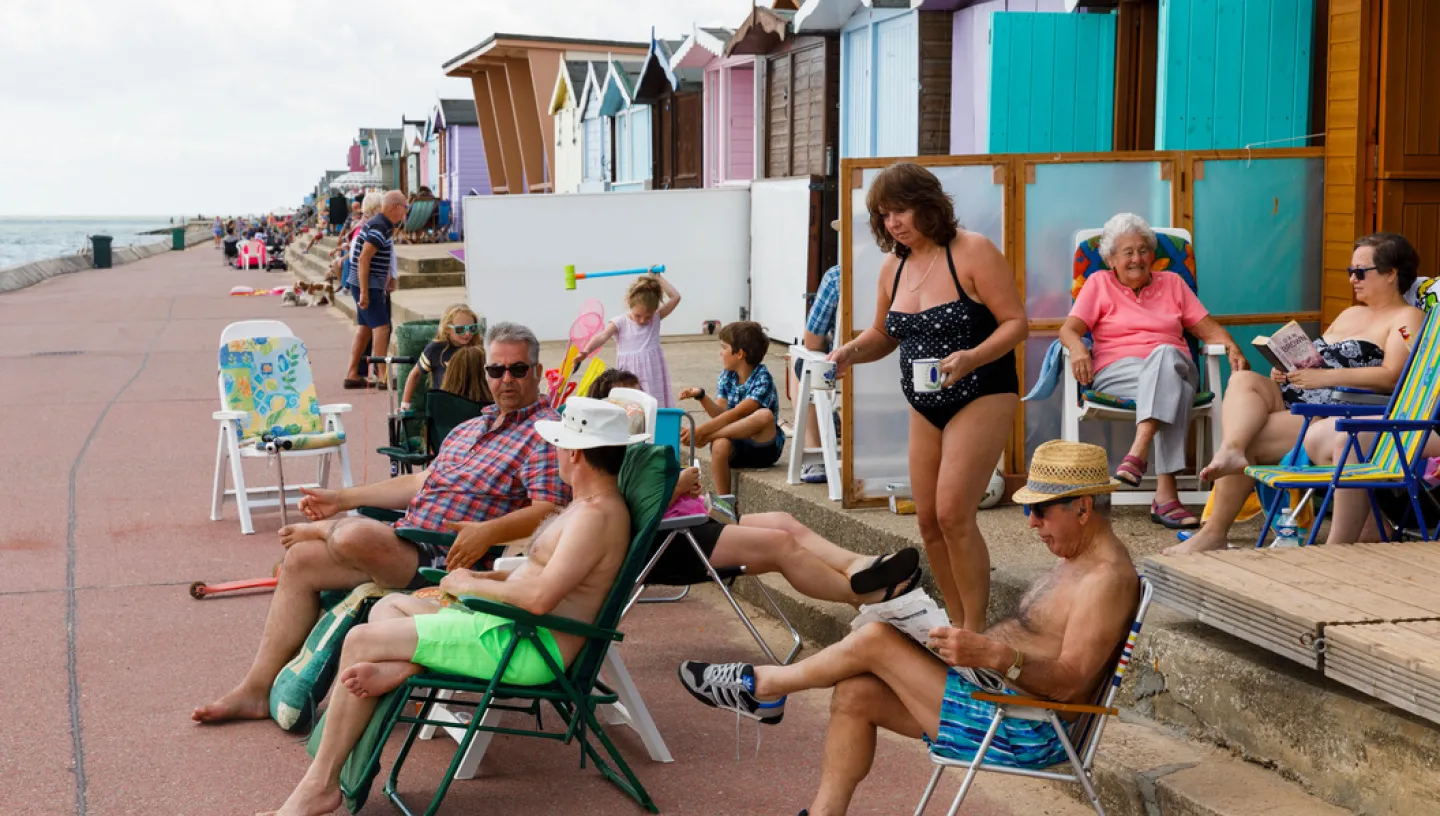
How does Martin Parr take a photo?
The Last Resort, an unflinching series of photographs of the working-class seaside resort of New Brighton in Merseyside, brought Martin Parr to wide public attention in the mid-1980s.
Thirty years later, Parr brings a new approach to the same subject: the leisure pursuits of ordinary people. His new commission for the National Maritime Museum was displayed in The Great British Seaside exhibition.
Cameras and styles over time
- 1970s: Early black and white photography: Leica M3 with a 35mm lens
- 1980s: On-board flash in the daytime with medium format. The Last Resort (1985): Makina Plaubel with a 55mm lens
- Mid-2000s: Parr switches to digital.
- 2017: Parr experiments extensively using a wider angle with the telephoto lens in Beach Therapy (2017)
- 2018: New commission for The Great British Seaside: Canon EOS 5D Mark IV
Observing the British
As a documentary photographer, Martin Parr has spent his career attune to the tempo of life in Britain. His interests in consumerism, tourism and class have taken him across the country: to village fetes, boat races, and, of course, the seaside.
His affection for the surreal and peculiar permeates his beach photography, which often questions or satirises our behaviour in uncomfortably familiar ways.
We get so used to seeing things, we almost forget to understand how strange everyday life is. So I think part of my job is to try and highlight the more surreal aspects of beach life, daily life, and illustrate that through photography.Martin Parr
Martin Parr's influences
In the 1970s when Parr started, photographers who wanted to be taken seriously and have their work displayed in museums needed to work in black and white, he told TIME magazine. At that time, ‘colour was the palette of commercial photography and snapshot photography.’
In the tradition of Tony Ray-Jones, Parr turned his eye to the story of life in Britain, taking striking shots of traditional country life in decline as factories closed and a newer, younger crowd introduced alternative lifestyles. Kristian Martin, Curator of The Great British Seaside, describes Parr as ‘the natural successor’ to Ray-Jones who pioneered non-commercial art photography in the UK. Twenty of his iconic seaside shots from the 1960s are on display in the new exhibition.
In the 1980s Parr was inspired by American colour photographers William Eggleston and Stephen Shore, and discarded monochrome for the popping colour photography he is now known for. His serious foray into colour continued his documentation of British life in a new way and his use of flash outdoors captured his subjects in action with crystalline precision.
John Hinde’s brightly saturated postcards of bustling Butlins camps in the 60s and 70s also caught Parr’s eye. Hinde’s influence can also be seen in the tension between the idealistic and the grimy in Parr’s photography - particularly in the seaside settings. The happy colours juxtapose the awkward elements of the scene.
The seaside as a laboratory
Since The Last Resort, Parr has continued to develop his technique, using the seaside as a ‘laboratory’ for his photography experiments. ‘Whenever I have a new technique I want to explore, I often would first do that on the beach,’ he says.
Many of his images typically take the viewer right up to the subject, meaning that Parr needed to get very close to people in order to capture their natural behaviour. Nothing is staged, so he needed to be careful about approaching subjects to avoid them becoming self-conscious.
In the mid-2000s, Parr ‘took the plunge’ and bought his first digital camera. He has experimented using medium format with flash, then a standard lens, and most recently the telephoto lens. This has given Parr ‘a different way of looking’, allowing him to stand further away and observe a wider scene of action.
“A different way of looking”
His new commission for the National Maritime Museum, displayed for the first time in The Great British Seaside exhibition, employs this technique alongside a standard lens.
In changeable weather, he spent a week leading up to the August Bank Holiday photographing the Essex coast: at Clacton-on-Sea, he captured a group of Hindu women commemorating the last day of the Holy month of Shravan, at Walton-on-the-Naze he found a sun-loving couple settling down in front of their beach hut trying to catch what rays they could and at Shoeburyness he snapped an elderly man taking gentle exercise on the promenade watched by a more reticent friend.
While showing familiar events and activities, the 20 works from this commission reveal an amazing diversity of people who are adapting the traditional seaside experience to fit their own social, cultural and religious needs.
